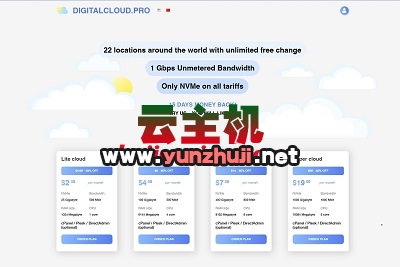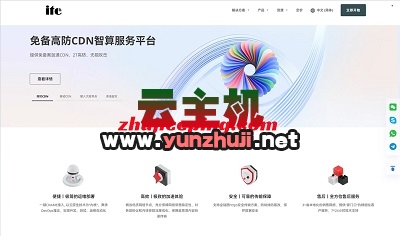include用于重用XML布局,减少重复代码;merge优化层级结构,避免多余ViewGroup;ViewStub按需加载布局,提升性能。 Android布局技巧之include、merge与ViewStub标签
背景介绍
在Android开发过程中,布局文件的设计至关重要,为了优化性能和提高代码重用性,官方提供了三种重要的布局标签:include、merge和ViewStub,这些标签不仅能帮助我们简化布局文件,还能提升应用的性能和用户体验,本文将详细介绍这三种标签的使用场景、基本用法及注意事项。
include布局重用
include的基本概念及使用场景
include标签用于在布局文件中引入其他布局文件,从而实现布局的复用,当多个Activity中都包含相同的标题栏时,可以将标题栏的布局抽取出来,通过include标签进行引用,避免重复定义。
减少重复代码:通过复用布局文件,可以减少重复代码,提高代码可维护性。
统一修改:对公共布局的修改只需在一处进行,所有引用该布局的文件都会自动更新。
示例代码:
titlebar_layout.xml:
<?xml version="1.0" encoding="utf-8"?>
<FrameLayout xmlns:android="http://schemas.android.com/apk/res/android"
android:id="@+id/preference_activity_title_root"
android:layout_width="match_parent"
android:layout_height="wrap_content"
android:padding="2dip"
android:background="@drawable/zns_activity_title_bg">
<TextView
android:id="@+id/preference_activity_title_text"
android:layout_width="match_parent"
android:layout_height="45dip"
android:gravity="center"
android:text="123"
android:textColor="#ffffff"
android:textSize="18sp"/>
<ImageView
android:id="@+id/preference_activity_title_image"
android:layout_width="30dip"
android:layout_height="25dip"
android:layout_gravity="center_vertical"
android:scaleType="fitCenter"
android:layout_marginLeft="5dip"
android:src="@drawable/common_menu_selector_white"/>
</FrameLayout> activity_main.xml:
<?xml version="1.0" encoding="utf-8"?>
<LinearLayout xmlns:android="http://schemas.android.com/apk/res/android"
android:layout_width="match_parent"
android:layout_height="match_parent"
android:orientation="vertical"
android:background="#000000">
<include layout="@layout/titlebar_layout"/>
<TextView
android:layout_width="match_parent"
android:layout_height="match_parent"
android:text="这是内容区域"
android:gravity="center"
android:textSize="25sp"
android:textColor="#ffffff"/>
</LinearLayout> include的注意事项
在使用include标签时,需要注意以下几点:
ID属性替换:被包含布局中的根节点ID会被包含布局中的ID替换。include标签中指定的ID会替换被包含布局的根节点ID。
多次引用问题:如果一个布局文件中有多个include标签引用同一个布局文件,需要为每个include标签设置不同的ID,否则会导致控件获取冲突。
宽高属性:如果需要在include标签中覆盖被包含布局的宽高属性,必须同时指定layout_width和layout_height属性,单独指定其中一个属性不会生效。
merge减少视图节点
merge的基本概念及使用场景
merge标签用于减少布局文件中的视图层级,从而提升性能,它可以将多个布局文件合并到一个父布局文件中,而不会增加额外的视图层级,这在复杂的布局文件中尤其有用。
减少视图层级:通过合并布局文件,减少不必要的视图层级,从而提高界面绘制效率。
优化性能:减少视图节点的数量,可以显著提升应用的性能,尤其是在低端设备上。
示例代码:
header.xml:
<?xml version="1.0" encoding="utf-8"?>
<merge xmlns:android="http://schemas.android.com/apk/res/android">
<Button
android:id="@+id/button1"
android:layout_width="wrap_content"
android:layout_height="wrap_content"
android:text="Button 1"/>
<Button
android:id="@+id/button2"
android:layout_width="wrap_content"
android:layout_height="wrap_content"
android:text="Button 2"/>
</merge> main.xml:
<?xml version="1.0" encoding="utf-8"?>
<RelativeLayout xmlns:android="http://schemas.android.com/apk/res/android"
android:layout_width="match_parent"
android:layout_height="match_parent">
<include layout="@layout/header"/>
<!-其他布局 -->
</RelativeLayout> merge的注意事项
在使用merge标签时,需要注意以下几点:
必须放在根节点:merge标签必须放在布局文件的根节点位置,不能包含在其他标签内部。
父容器必须指定:在通过LayoutInflater.inflate()方法渲染包含merge标签的布局时,必须指定一个父容器,并且第三个参数必须为true,这是因为merge本身并不是一个ViewGroup,而是一个占位符。
无效属性:由于merge不是一个实际的View或ViewGroup,因此对其设置的属性都是无效的。
ViewStub动态加载视图
1. ViewStub的基本概念及使用场景
ViewStub标签用于延迟加载视图,只有在实际需要时才会将其加载到内存中,这种方式可以避免在启动时加载不必要的视图,从而节省内存和提升性能,适用于那些不常用但需要快速显示的复杂视图。
延迟加载:只有在需要时才加载视图,节省内存资源。
加快初始加载速度:提高应用启动速度,因为不需要一开始就将所有视图加载到内存中。
示例代码:
activity_main.xml:
<?xml version="1.0" encoding="utf-8"?>
<FrameLayout xmlns:android="http://schemas.android.com/apk/res/android"
android:layout_width="match_parent"
android:layout_height="match_parent">
<Button
android:id="@+id/loadButton"
android:layout_width="wrap_content"
android:layout_height="wrap_content"
android:text="Load ViewStub"/>
<ViewStub
android:id="@+id/viewstub1"
android:layout_width="fill_parent"
android:layout_height="fill_parent"
android:layout="@layout/detail"/>
</FrameLayout> detail.xml:
<?xml version="1.0" encoding="utf-8"?>
<LinearLayout xmlns:android="http://schemas.android.com/apk/res/android"
android:layout_width="match_parent"
android:layout_height="match_parent"
android:orientation="vertical">
<TextView
android:layout_width="match_parent"
android:layout_height="wrap_content"
android:text="This is a detail view"/>
</LinearLayout> ViewStub的使用方法
使用ViewStub有两种主要方式:通过XML属性设置和通过Java代码设置。
通过XML属性设置:
在布局文件中使用android:layout属性指定要加载的布局资源,当需要加载时,可以通过调用setVisibility(View.VISIBLE)或inflate()方法来加载视图。
示例代码:
ViewStub viewstub = findViewById(R.id.viewstub1); viewstub.setVisibility(View.VISIBLE); // 或者使用 viewstub.inflate();
通过Java代码设置:
可以在运行时通过setLayoutResource(int layoutResId)方法动态设置要加载的布局资源,然后再调用inflate()方法进行加载。
示例代码:
ViewStub viewstub = findViewById(R.id.viewstub1); viewstub.setLayoutResource(R.layout.detail); viewstub.inflate();
ViewStub的注意事项
宽高为0:ViewStub的初始宽高为0,且默认不可见,只有当调用inflate()方法后,它才会被实例化为真实的视图并显示出来。
资源占用:虽然ViewStub本身不占用太多资源,但一旦被实例化,所引用的布局文件中的所有视图都会被加载到内存中,不要滥用ViewStub,只在必要时使用。
状态保持:ViewStub不支持保存视图的状态,每次加载都会重新创建一个新的视图实例,如果需要保持状态,可以使用其他方式如Fragment或自定义视图。
本文详细介绍了Android布局中的三种重要标签:include、merge和ViewStub的基本概念、使用场景、使用方法及注意事项,通过合理使用这些标签,可以有效优化布局文件,提高应用的性能和可维护性,在实际开发中,根据具体需求选择合适的标签,以达到最佳效果,希望本文能为您在Android布局优化方面提供有价值的参考和帮助。
到此,以上就是小编对于“Android布局技巧之include、merge与ViewStub标签”的问题就介绍到这了,希望介绍的几点解答对大家有用,有任何问题和不懂的,欢迎各位朋友在评论区讨论,给我留言。

 云主机测评网
云主机测评网














最新评论
本站CDN与莫名CDN同款、亚太CDN、速度还不错,值得推荐。
感谢推荐我们公司产品、有什么活动会第一时间公布!
我在用这类站群服务器、还可以. 用很多年了。